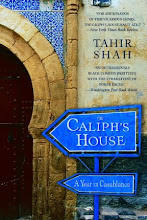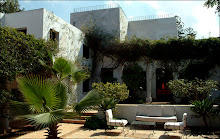Serbia is one of the most peculiar, yet fascinating countries in the world, yet With Their Backs to the World is perhaps one of the only non-academic accounts of modern Serbia that isn’t focused primarily on Serbian atrocities during the Balkan wars of the 1990’s. Seierstad, the author of The Bookseller of Kabul, and A Hundred and One Days: A Baghdad Journal, is a brave journalist that has the courage to ask the difficult questions and the good judgment to avoid clichéd reporting. This is a nuanced and balanced portrait of the Serbs told through the lives of a convicted war criminal’s wife, a musician, a senior citizen that lives in the countryside, a journalist, a political reformer, a nationalist politician, an orthodox priest, Kosovo Serb refugees, and a liberal student. In reading about the lives of the Serbs profiled in each chapter, the reader gains insights into a beleaguered and often misunderstood people.
Serbs want to join the E.U. yet many are still focused on historical grievances and perceived injustices. They believe that the world has demonized them for atrocities committed during the breakup of Yugoslavia without understanding that Serbs too were ethnically cleansed from Bosnia, Croatia and Kosovo. They believe that the western media, and particularly Americans, have focused on Serb violence against Muslims from Bosnia and Kosovo, while ignoring violence against Serbs and the burning of Serb churches in Kosovo. Readers may be able to empathize with some of their grievances, however, one also gets the undeniable impression that Serbs are still a very proud people that are reluctant to come to grips with their dark history in the 1990’s. Seierstad’s book gives us a very readable portrait of a small, proud, post-war country that is caught between Yugo-nostalgia, the moral outrage of having been attacked by NATO, and hopes that perhaps a future in the EU will bring some semblance of normality to a traumatized country.
Highly Recommended
Sunday, February 10, 2008
Guests of the Ayatollah- Mark Bowden
Today it’s almost impossible to imagine a group of radical students overtaking an American Embassy and seizing sixty-six hostages. Our embassies and consulates overseas are impenetrable fortresses that are so well fortified that even our own diplomats sometimes can’t gain access. When I was in the Foreign Service, if I forgot my badge, I couldn’t even get in to work, even though all of the guards knew me, until I could call someone in my section to come outside and sign me in. But in 1979, we were not yet completely reviled around the Middle East, and Guests of the Ayatollah tells the riveting, page-turning account of how a group of zealous Iranian students managed to seize control of the American Embassy in Tehran and hold sixty-six American diplomats hostage for 444 days, while winning the blessing of Ayatollah Khomeini and the Iranian people, who were repelled by the excesses of the American-backed Shah, Mohammed Reza Pahlavi.
Bowden, the author of Killing Pablo, Blackhawk Down, and many others, is a zen-master of narrative non-fiction, and this is certainly his most compelling work to date. Bowden succeeds in brining us inside the minds of the hostages, their Iranian captors, and the policymakers in Washington who had to decide how to resolve the standoff. The hostage crisis was probably the beginning of the end of Jimmy Carter- as the standoff served to make him appear weak and indecisive to an already recession beleaguered populace that was being seduced by the tough talking Ronald Reagan- but Bowden’s account helps the reader understand that Carter’s top priority was the safety of the hostages, rather than appearing tough to voters. Bowden also artfully illustrates the treacherousness of several self-serving left wing grandstanders who made high profile trips to visit the hostages, only to bolster the cause of the captors, whom they praised for taking on American imperialism, while offering little or no comfort to the hostages.
Guests of the Ayatollah is well worth reading, not only because it’s a thrilling narrative, but also because it helps us understand a country that neo-conservative and pro-Israel hawks desperately want us to wage war against. Nearly thirty years after the fact, the hostage incident still casts a shadow over U.S.-Iranian relations- we still fail to understand the ramifications of our 1953 CIA directed plot which toppled a popular left-leaning democratically elected Iranian leader, Mohammed Mosaddeq, and subsequent installation of the corrupt Shah as leader, and Iranians still fail to understand how repugnant and unacceptable it is to take diplomats hostage as a means of expressing a political grievance.
Highly Recommended
Bowden, the author of Killing Pablo, Blackhawk Down, and many others, is a zen-master of narrative non-fiction, and this is certainly his most compelling work to date. Bowden succeeds in brining us inside the minds of the hostages, their Iranian captors, and the policymakers in Washington who had to decide how to resolve the standoff. The hostage crisis was probably the beginning of the end of Jimmy Carter- as the standoff served to make him appear weak and indecisive to an already recession beleaguered populace that was being seduced by the tough talking Ronald Reagan- but Bowden’s account helps the reader understand that Carter’s top priority was the safety of the hostages, rather than appearing tough to voters. Bowden also artfully illustrates the treacherousness of several self-serving left wing grandstanders who made high profile trips to visit the hostages, only to bolster the cause of the captors, whom they praised for taking on American imperialism, while offering little or no comfort to the hostages.
Guests of the Ayatollah is well worth reading, not only because it’s a thrilling narrative, but also because it helps us understand a country that neo-conservative and pro-Israel hawks desperately want us to wage war against. Nearly thirty years after the fact, the hostage incident still casts a shadow over U.S.-Iranian relations- we still fail to understand the ramifications of our 1953 CIA directed plot which toppled a popular left-leaning democratically elected Iranian leader, Mohammed Mosaddeq, and subsequent installation of the corrupt Shah as leader, and Iranians still fail to understand how repugnant and unacceptable it is to take diplomats hostage as a means of expressing a political grievance.
Highly Recommended
Thursday, January 31, 2008
The Caliph's House by Tahir Shah
The A Year in ______ genre of travel writing is about as stale as a Dunkin’ donut by late afternoon, so don’t fall into the trap of believing that Tahir Shah’s The Caliph’s House is part of this tired and lifeless class of travel books. Shah, unlike Elizabeth Gilbert- the super-rich author of a self-absorbed and vacuous travel narrative called Eat, Love, and Pray, didn’t just move to Morrocco for a year as part of a contrived plot to sell a book. He bought a house, and, only weeks after having a child, picked up his family and moved them to Casablanca for good. (You can see some photos of the house here: http://www.nytimes.com/2006/03/30/garden/30casablanca.html?_r=1&oref=slogin)
The Caliph’s House is a rockin’ good time. The best travel narratives allow us to live through someone else’s hellishly bad time, and Shah’s book gives us a vivid, ring-side seat for some savagely funny adventures, as he struggles to overcome a crew of greedy, ghost-obsessed caretakers, a series of rapacious builders and assistants, unwelcome visitors from England, and a neighborhood Mafioso that appears to be scheming to steal his house. Shahs’s lucid narrative, biting sarcasm and knack for storytelling make every page of this book a sheer joy to treasure. In meeting the cast of characters Shah encounters in the book, one gets a clearer picture of the Moroccan character and culture than one could ever develop from a traditional history or travel book. Shah constantly keeps the reader wanting more, by divulging tantalizing bits of stories and then returning to unfinished plot lines later in the book.
Highly Recommended
The Caliph’s House is a rockin’ good time. The best travel narratives allow us to live through someone else’s hellishly bad time, and Shah’s book gives us a vivid, ring-side seat for some savagely funny adventures, as he struggles to overcome a crew of greedy, ghost-obsessed caretakers, a series of rapacious builders and assistants, unwelcome visitors from England, and a neighborhood Mafioso that appears to be scheming to steal his house. Shahs’s lucid narrative, biting sarcasm and knack for storytelling make every page of this book a sheer joy to treasure. In meeting the cast of characters Shah encounters in the book, one gets a clearer picture of the Moroccan character and culture than one could ever develop from a traditional history or travel book. Shah constantly keeps the reader wanting more, by divulging tantalizing bits of stories and then returning to unfinished plot lines later in the book.
Highly Recommended
Labels:
book review,
books,
Tahir Shah,
The Caliph's House
Subscribe to:
Posts (Atom)




